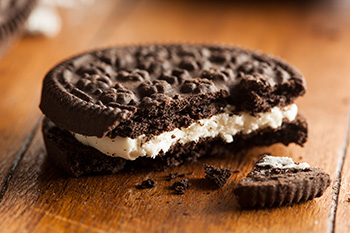Eating Healthy: the Basics
1. What is a healthy breakfast?
2. What is a healthy lunch?
3. What is a healthy dinner?
4. How much should I weigh?
5. How many calories should I be eating?
6. What is the best way to lose
weight?
7. How can I keep my weight loss
goal in mind and stay motivated?
8. What is a healthy weekly weight loss?
9. How to set weight loss goals and make
them happen
10. How to keep a food diary, and
why it is essential to successful weight loss
11. Are all fats bad for you?
12. Are saturated fats bad
for you?
13. Are
unsaturated fats good for you?
14. Are carbohydrates bad for you?
15. Is fiber good for you?
16. How to read nutrition/food labels
17. How to plan your weekly menus
18. Why should I eat less salt?
19. What
do the sodium (salt) numbers mean on food labels?
20. What is The Mediterranean Diet?
21. Why eating vegetables is good for
you
22. Why eating fruit and nuts
is good for you
23. Why are cereals and whole grains good for you?
24. What are legumes, and why are they good for you?
25. Why is eating fish good for you?
26. Which fats and oils are good for
you?
27. Are dairy products good for you?
28. Which meats should I not eat?
29. Is drinking alcohol good for
you?
30. Is it important to measure your
ingredients?
31. Are snacks good for you?
32. How to choose the right portion size
33. Can you lose weight with a smaller
plate?
34. Eat healthier by cleaning out your
pantry
35. Which oils and fats should I keep in my pantry?
35. Which oils and fats are good for you - and when should I use them?
36. Which carbohydrates are good for you?
37. What is the best chicken or turkey for you?
38. Are dairy products good for you?
39. Which nuts and seeds should I eat?
40. Is red meat like beef or pork bad or good for you?
41. Is eating dessert good or bad for
you?
42. Is drinking soda bad for you?
43. Is drinking coffee bad for you?
44. How can healthy food taste good? Part 1
45. How can healthy food taste good? Part
2
46. How to eat healthy while eating
out
47. Are vitamins and supplements necessary
to eat healthy?
48. How to eat healthy while traveling
Eating Healthy: the Basics
Eat healthier by cleaning out your pantry

When I am giving talks I always joke that none of my patients ever eats Oreo cookies. Now, I find this really strange because the aisles in the grocery store are FULL of cookies (but none of my patients is buying them). This always gets a big laugh, but I think folks are laughing at themselves. We aren't always honest with ourselves, and probably even more often are not completely honest with our doctors (shocking, I know).
When patients tell me that they don't eat Oreos, I would really like to leave the office and drive them to their house and go through their cupboards and refrigerator with them. Some patients might prove me wrong, but research says that most people have an awful lot of cookies or other junk in their pantry. When researchers have studied people's trash, they have seen a clear disconnect between what people will say they are eating and what ends up in their trash bins.
So what should you do? Clean out your kitchen. Get rid of the stupid food. Start with the cupboard. If you have sugar laden cereals, get rid of them (use the 5/20 rule). Choose high fiber cereals like oatmeal, granola and healthy whole grain cereals.
Toss out your pre-prepared foods. "Complete" meals like Hamburger Helper, Sloppy Joe mixes and Rice a Roni are full of fat and salt that you just don't need. There are better choices. Keep good quality pasta sauces on hand along with whole wheat pasta for a quick meal. Purchase your own spices to make Sloppy Joes and tacos and you'll easily be able to make a healthy version. Fill your pantry with the ingredients that you need to make fresh, healthy recipes: rice, beans, lentils, whole wheat pasta, canned tomatoes, canned tuna and low-sodium chicken broth.
The same rule holds true for snacks. If it's processed, like crackers, Cheez-its, potato chips, and Cheetos, toss them out. If you are a savory / salty snacker, fill your pantry with nuts. The 100 calorie single serving microwave popcorn is a fantastic snack option, especially when you compare it with the same volume of potato chips at almost 400 calories.
This also holds true for those Oreo cookies. If you are a sweet snacker, get rid of the cookies, cakes, and candy and fill your kitchen with fruit. Canned, fresh, frozen, or dried; it doesn't matter. There's great evidence that you'll be just as satisfied (and happier) eating fruit rather than candy.
After finishing with your cupboard, it's time for the refrigerator. I'll talk later about more specific choices of meats and fish and such, but for now look at your freezer. Most of the frozen dinners are pretty bad for you. Some better options are listed in the Food Reviews section here on DrGourmet.com. All of these have been reviewed by the Dr. Gourmet Tasting Panel and are better for you (although many still contain more salt than you should eat on a regular basis).
The best way to fill up your kitchen with healthy ingredients is planning. Following The Dr. Gourmet Diet Plan will help you slowly but surely buy the pasta, rice, beans, spices, herbs, vegetables, chicken stock, etc. that you need to make great tasting healthy recipes.
